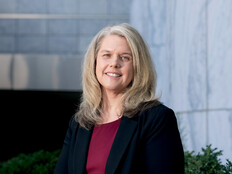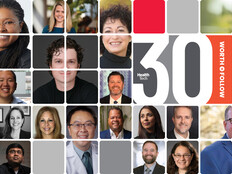Q&A: Majd Alwan on Tech’s Role in the Future of Senior Living
It’s long been known that technology would disrupt how the senior living industry delivers aging services, and as providers forge their paths into the future of senior care, major industry associations have made it a priority to bring tech to the forefront of the conversation.
That’s where the LeadingAge Center for Aging Services Technology (CAST) comes into play, a program of industry association LeadingAge that officially formed in 2003. The center’s mission revolves around raising awareness about technology solutions, along with facilitating partnerships between aging service operators and vendors and providing research about how technology can improve the aging experience.
Here, Majd Alwan, the senior vice president of technology for LeadingAge and executive director of CAST, offers his take on the 21st century senior living community — what it entails, what role technology plays and the goals associated with bringing tech solutions into the fold.
SIGN UP: Get more news from the HealthTech newsletter in your inbox every two weeks
HEALTHTECH: What is your definition of the 21st century senior living community?
ALWAN: Technology has disrupted many industries and sectors, and senior living is not immune. Technology is a strategic investment and must be incorporated in planning and operations to meet a number of demands.

The first is the increasing trend of aging in place. Technology enables seniors to live to the best of their abilities, in terms of their functionality and health and wellness outcomes, as well as engaging them to be active members of their communities.
The second major demand involves the pressures we’re seeing on reimbursement. There’s pressure on providers to be connected to and coordinating with others.
The third is the importance of person-centeredness. It’s taking into consideration the patient’s and the patient’s family’s opinion, and how that may affect payment.
There’s also the improvement of timeliness, accuracy and comprehensiveness of care documentation.
Technology can be geared toward prevention and getting ahead of rising health issues. There is also additional health and wellness-focused technology, and none are effective unless we put them in a context of social engagement or incorporate a gamification aspect to makes these activities fun or ensure there is a social network involved to provide support.
HEALTHTECH: What is the most important type of technology in senior living right now?
ALWAN: None of these technologies would deliver unless you have the right foundation, the right pipes — the information and communication infrastructure. That includes high-speed internet. We’re living in an age where mobility is taking over, and mobility is also key for engaging staff, especially since we have a significant shortage of caregivers and frontline staff.
I would recommend that the infrastructure is built and updated once and for all, to cater for the other tech applications to be layered on top of it. The only way you can do this is by looking at the strategic plan and determining what direction you’re going — what you’ll be specializing in and how that can be built off the infrastructure.
HEALTHTECH: How does technology support the labor shortage in the industry?
ALWAN: Technology is an efficiency tool. That’s proven in many sectors now.
Technology helps the care professional have much more information and a comprehensive understanding of the context surrounding the individual.
The second aspect is if we really want to overcome the shortage, we have to make sure that we have the tech as an attraction. Millennials are comfortable using technology. They live and interact on these devices all day outside of work. It would be absurd that they’d be willing to come into a long-term care community and do their work without technology. I firmly believe that technology could be one key element used to attract millennials to work in the space, and ensure that we compete with other providers, as well as the acute care systems that are more technologically advanced and appealing.
HEALTHTECH: What are your thoughts on creating amenities packages and upgrades to rents based on technology add-ons?
ALWAN: It is an option — frankly, maybe in the short term. Can you imagine someone who is now in their 60s coming into a retirement community if they don’t have access to technology that’s already become part of their daily lives? My advice is to not invest in Band-Aid solutions for the short term. If embarking on an investment in upgrading, expanding or building a new community, it’s worth ensuring everything is in place that will make the community attractive to future residents and future staff.
HEALTHTECH: What’s the overall goal behind implementing technology and bringing senior living communities into the 21st century?
ALWAN: It’s the key to thriving and competing in the future, because future residents, care delivery models and staff are going to demand that we have these technologies.
With this shift that we’ve seen over the past few years, from paying for service to paying for performance, we now have to demonstrate data, quality and patient satisfaction to show our referral sources like hospitals, accountable care organizations and more that we have better quality than our competitors. Imagine what it would take to track all of these, without technology and without an EHR. And even with the EHR, imagine how much easier it would be if you had something advanced with the ability to monitor medications and clinical decision support systems.
The other piece is improving quality as a result of sharing information during transitions of care. Two people could have the same condition and background, but different treatment goals, so having that information exchange and care planning is key.
HEALTHTECH: What is your advice to a community on how to get a technology program started?
ALWAN: I think the only advice I have is, we need to, as parties of or stakeholders in long-term post-acute care, take advantage of technology and disrupt ourselves.
Otherwise, we’ll see external disruptors pulling the rug from under our feet and eating our lunch, just as Uber and Lyft did for the cab industry. That would be my only advice — act quickly before it’s too late.
For more on how to make successful use of technology in the 21st century senior living community, check the report "The 21st Century Senior Living Community."








